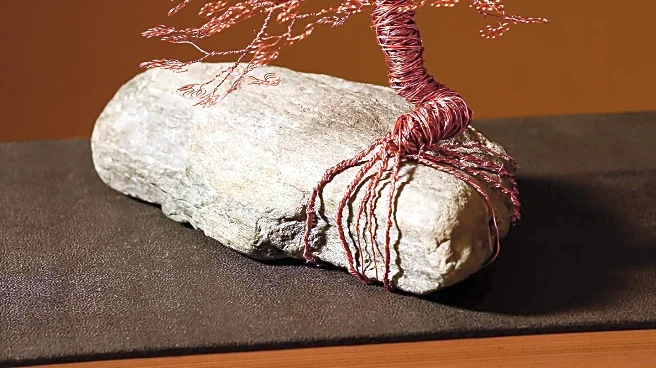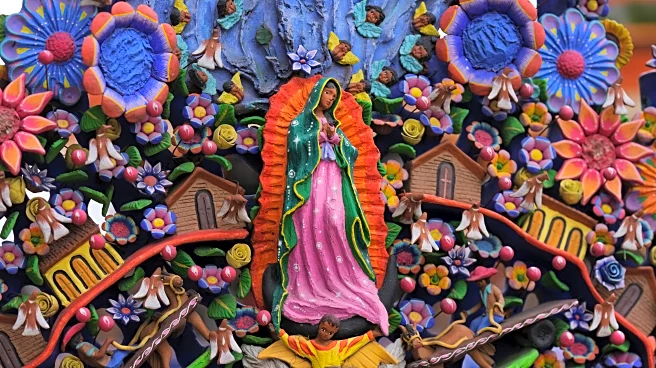What's Happening?
In Metepec, Mexico, artisans are gaining international acclaim for their intricate clay sculptures known as Trees of Life. These artworks, deeply rooted in Mexican culture and tradition, often depict biblical
scenes and local folklore. Craftsman Hilario Hernández, among others, has been recognized for his contributions, including creating a Tree of Life for Pope Benedict XVI. The sculptures are celebrated for their artistic and cultural value, serving as symbols of identity and heritage for the community. The Metepec Clay Museum hosts an annual contest to showcase these works, attracting artisans from across Mexico.
Why It's Important?
The global recognition of Trees of Life highlights the importance of preserving cultural heritage and traditional craftsmanship. These sculptures not only represent artistic expression but also serve as a means of cultural storytelling, preserving the history and beliefs of the Mexican people. The international interest in these artworks can boost local economies by attracting tourism and providing artisans with new markets for their creations. Additionally, the Trees of Life exemplify the fusion of art and faith, offering insights into the cultural and religious practices of the region.
Beyond the Headlines
The Trees of Life also raise questions about the preservation of traditional crafts in the face of modernization and globalization. As demand for these artworks grows, there is a risk of commercialization that could dilute their cultural significance. Efforts to maintain the authenticity and integrity of the craft are essential to ensure that future generations can continue to appreciate and learn from these cultural artifacts. The artisans' commitment to using traditional techniques and materials underscores the importance of sustainable practices in preserving cultural heritage.













